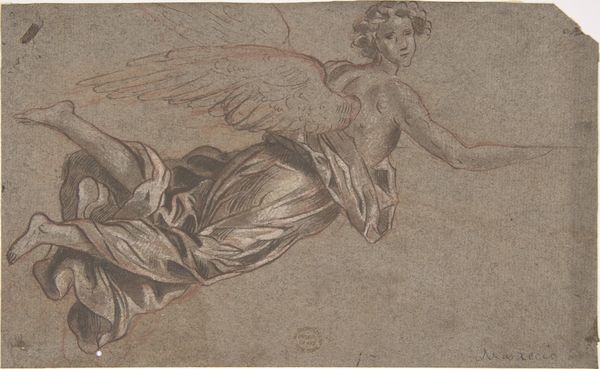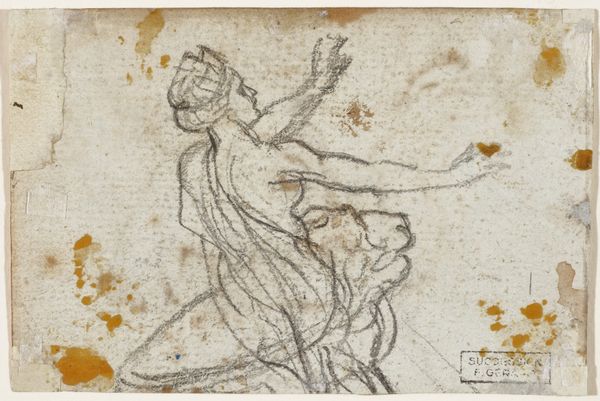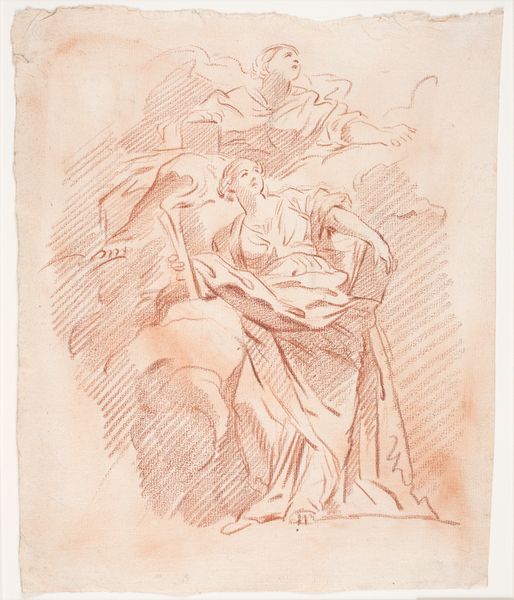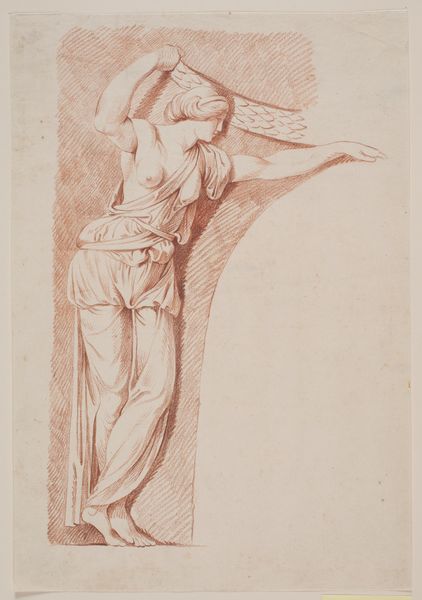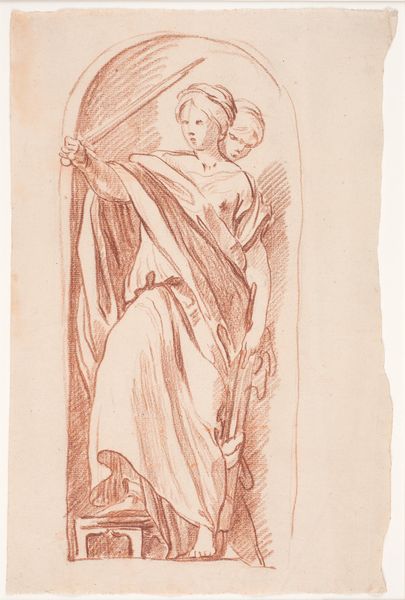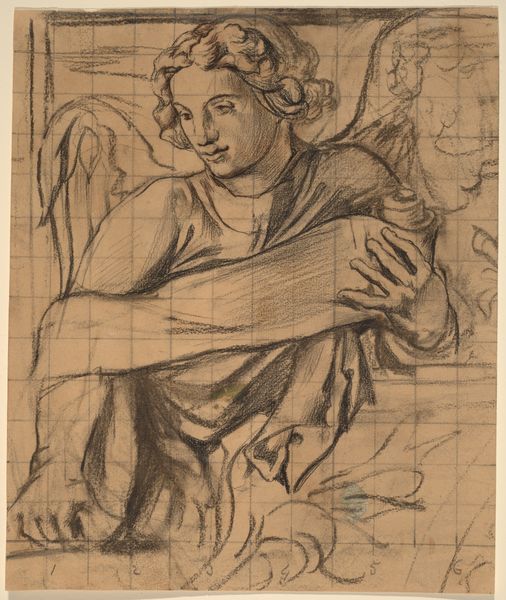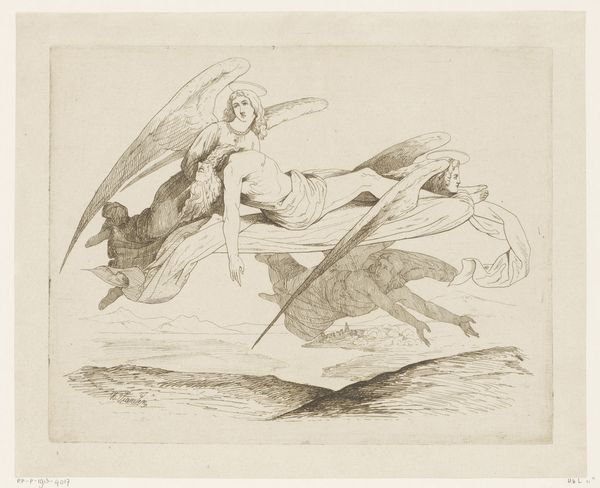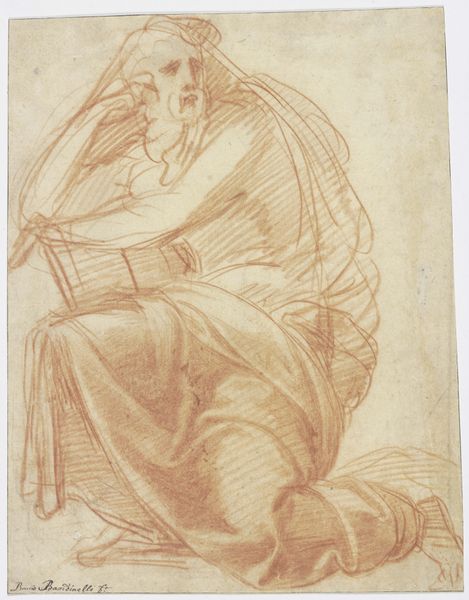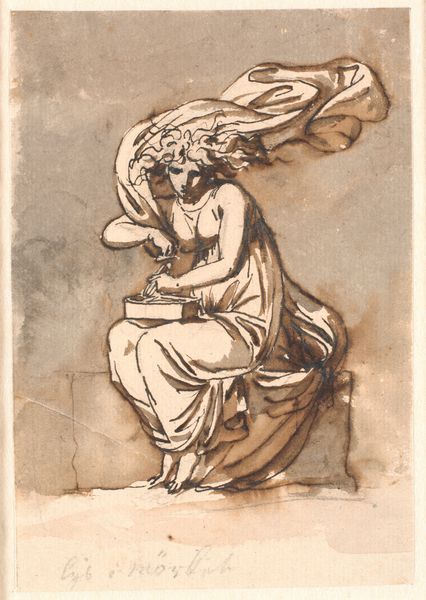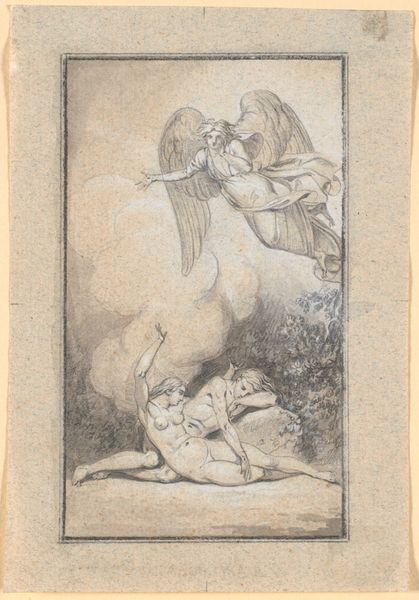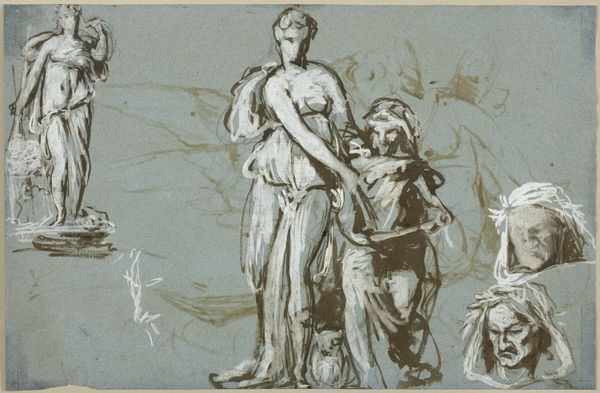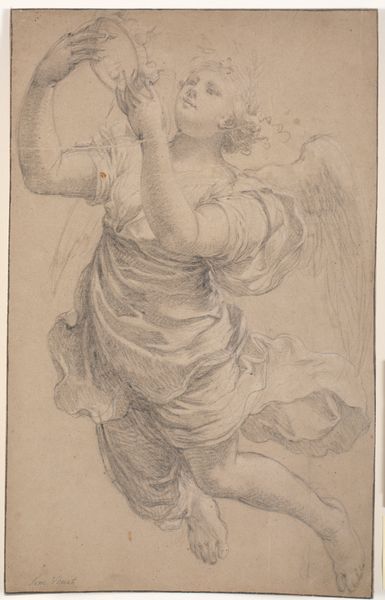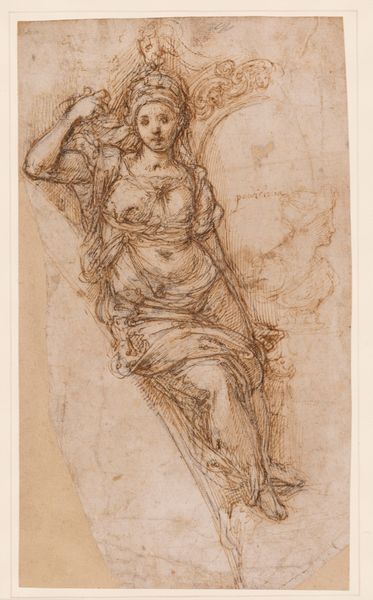
Vinget kvindeskikkelse i cirkelrundt felt. T.h. studie af figurens venstre fod 1743 - 1809
0:00
0:00
Dimensions: 218 mm (height) x 245 mm (width) (bladmaal)
Curator: This is Nicolai Abildgaard’s, "Winged Female Figure in a Circular Field. To the right, a study of the figure's left foot," which he worked on sometime between 1743 and 1809. It's currently held here at the SMK. Editor: It's quite striking! There’s a sensitivity in the linework that softens what could be an imposing winged figure. It feels so delicate, like a porcelain doll someone has been sketching after carefully observing. What materials did Abildgaard use for this? Curator: This piece is a drawing, so likely pen and ink on paper. We know Abildgaard was a leading figure of neoclassicism in Denmark, and you can see his interest in idealized forms, clearly inspired by classical sculpture. It reveals the common artistic practice from this period in making such a preparatory study. Editor: Yes, it gives insight into process, doesn’t it? The visible study of the foot to the right hints at the artist grappling with the material representation of the ideal, constantly testing its possibilities in the sketch form, while working towards what they deem to be "finished." It bridges the traditional gap between finished artworks and studio labor. Curator: Exactly. His position as director of the Academy of Fine Arts certainly shaped his aesthetic. Neoclassicism became entwined with the values of the Enlightenment: reason, order, and a return to classical virtues. The political message would not always fit Denmark at this time though. Editor: I notice she’s semi-nude and almost grounded. There's a tension between the figure’s expected ethereal quality, given the wings and wispy flowers, and the very present depiction of her form. Curator: I think that reflects the complexity of Romanticism's emergence out of neoclassicism—an embrace of emotion and individualism while still holding onto certain aesthetic ideals. This reminds me how Abildgaard engaged in the political discourses of his time through his art. He explored themes of liberty, revolution, and civic virtue which could have been challenging to express overtly. Editor: So it shows the socio-political tensions influencing its making and reception at the time. For me, though, I still can't help but marvel at the interplay between the boldness of the line and its fragility—the materials truly speak. Curator: It allows us to better understand this work’s historical impact as well. Editor: Indeed, looking at both labor and its cultural background opens up new ways to comprehend it.
Comments
No comments
Be the first to comment and join the conversation on the ultimate creative platform.
